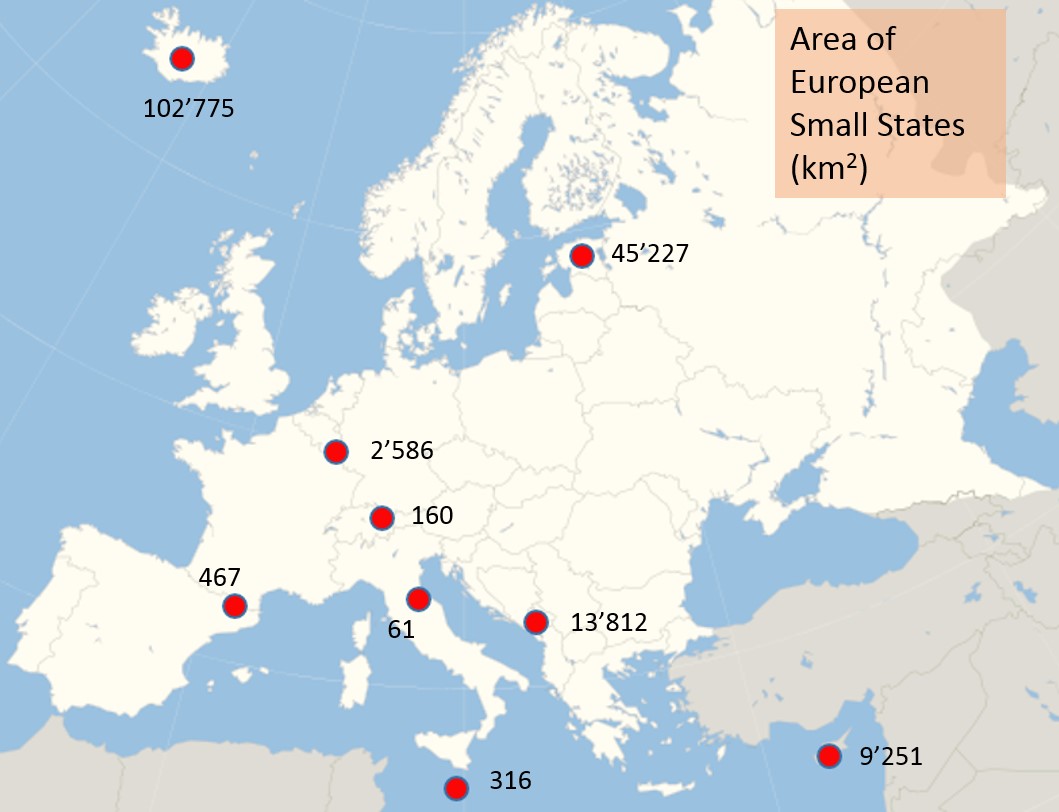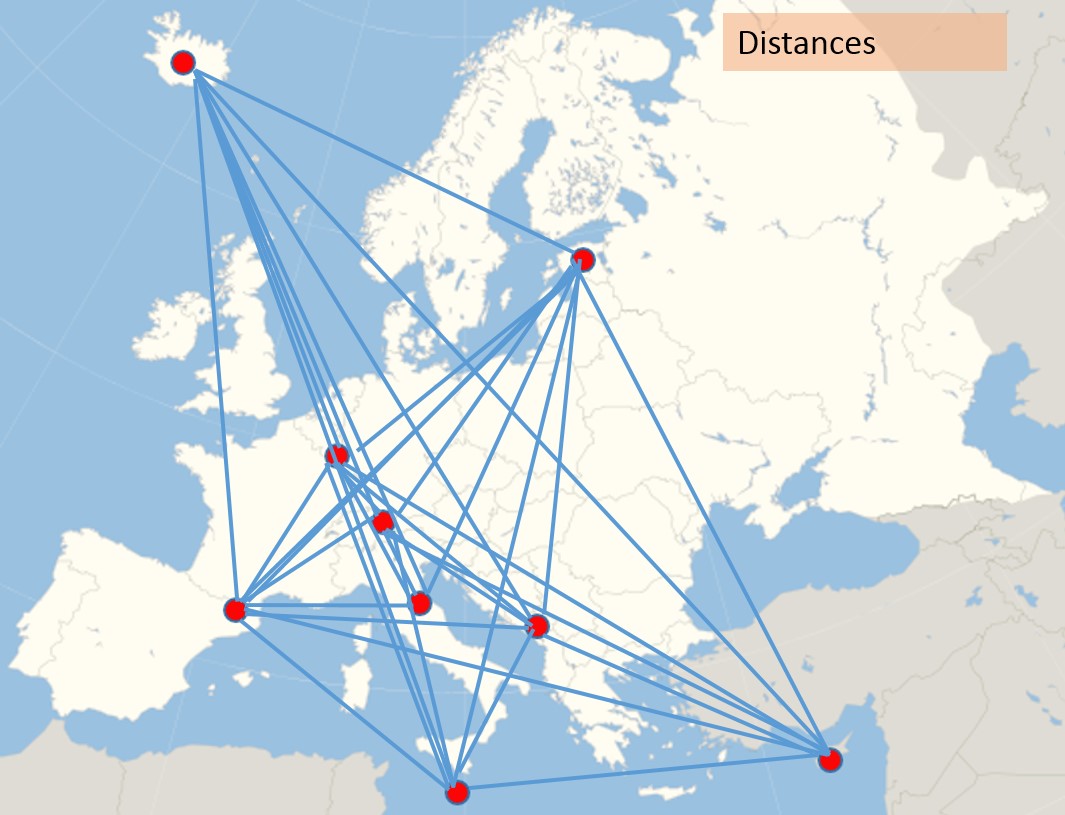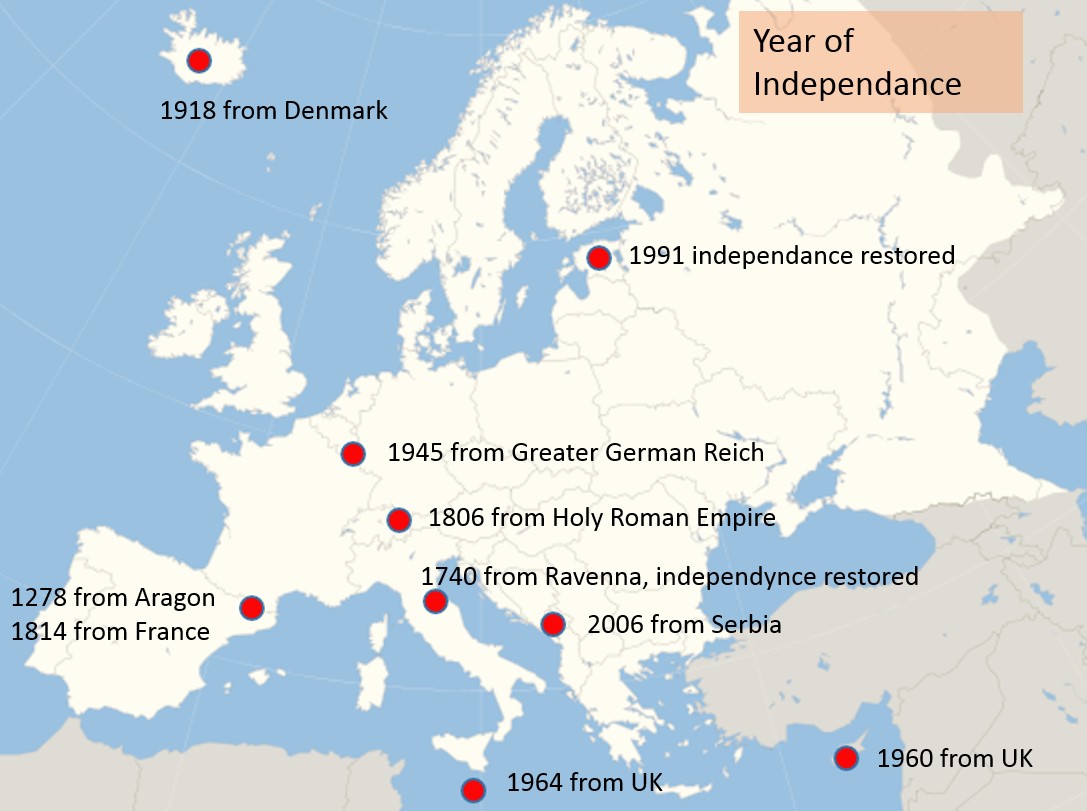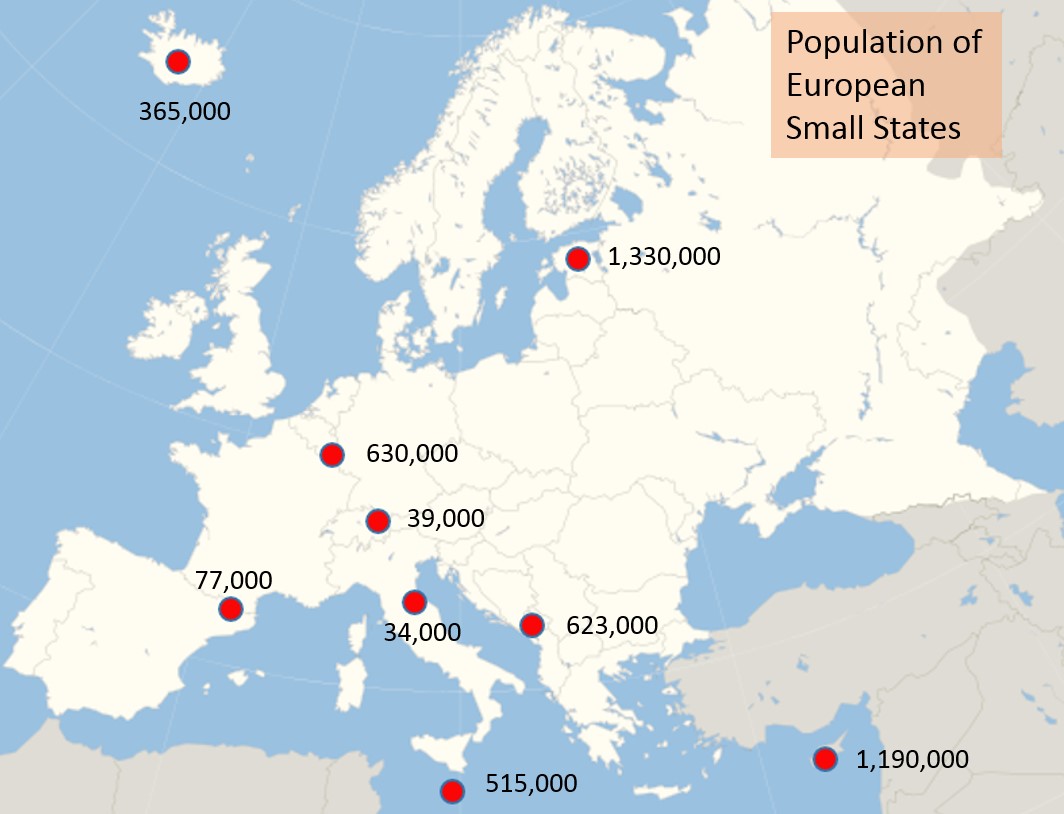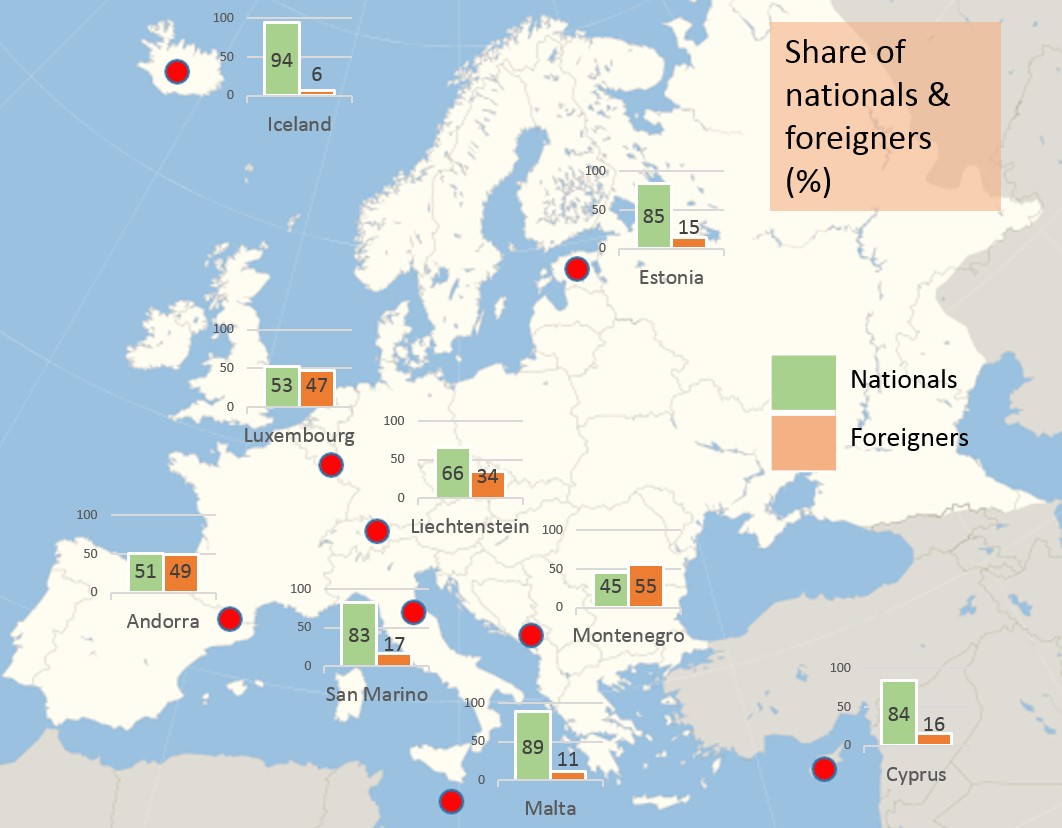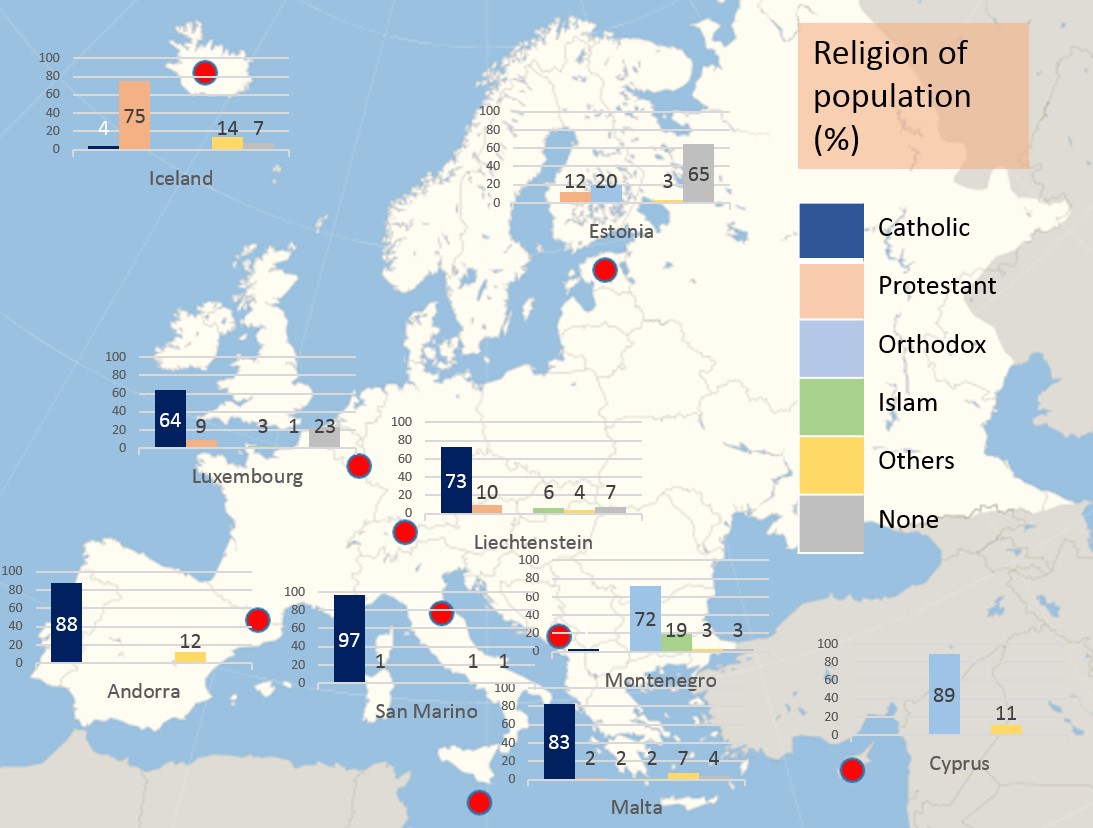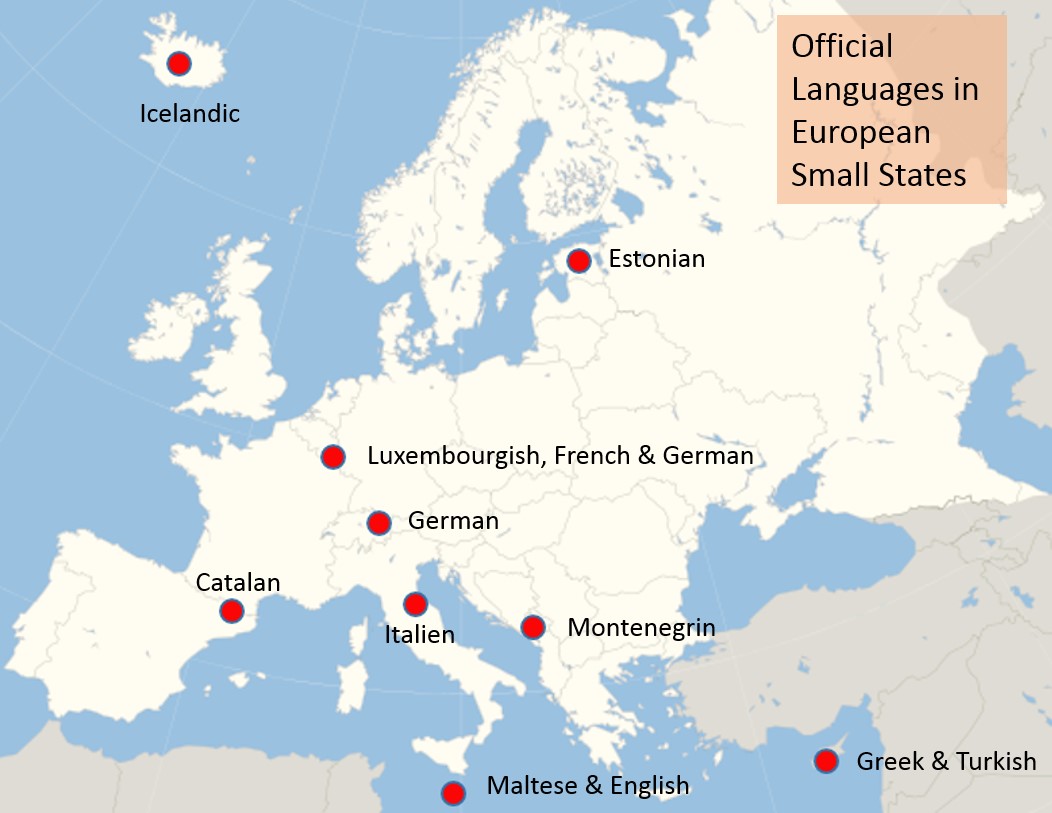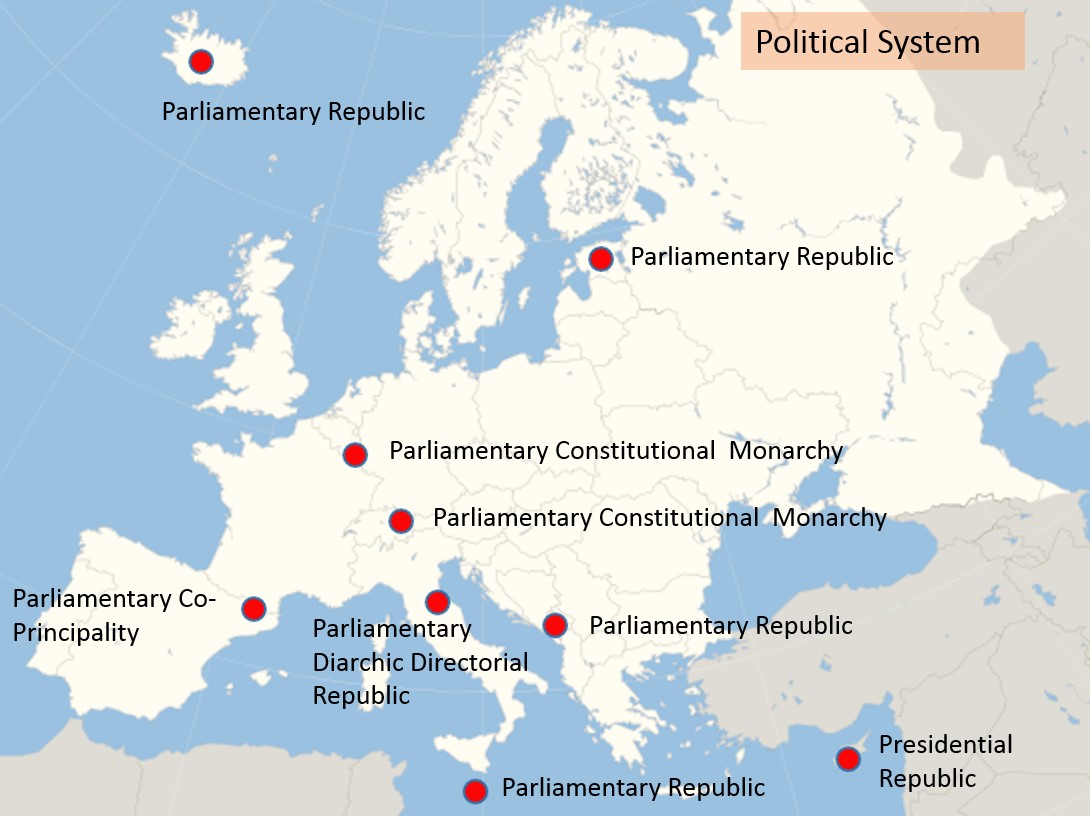All European Small States have had an eventful history, which in the end has led to the fact that they are now accepted as independent states in the world community and can operate with their own constitutions and political scope for action.
San Marino's state independence, which has existed uninterruptedly since 1740, goes back the furthest. However, the state had already existed in its territorial contours before that, but was occupied several times and was later able to regain independence.
Liechtenstein was embedded in the Holy Roman Empire for many centuries. Only with the fall of the Old Empire and the triumphal procession of Napoleon did the Principality of Liechtenstein gain sovereignty in 1806 and has not had to give it up until today - not even during the period of the First and Second World War.
Iceland had been ruled and influenced by Denmark for centuries, as was Greenland further north. After autonomy had already been granted to some extent before, Iceland finally gained state sovereignty in 1918.
Throughout its history, Luxembourg has been exposed to changing influences and has been repeatedly occupied and governed by neighbouring states. The last conquest was by Hitler's Germany. After 1945, Luxembourg regained sovereignty.
Cyprus was under Ottoman rule from 1571 to 1878, then leased by the Ottoman Empire to Britain, which annexed Cyprus in 1918. British colonial rule ended with the independence of Cyprus in 1960, but the occupation of the north-eastern part of Cyprus by Turkey in 1974 meant that sovereignty since then cannot be exercised over the entire island territory.
After several changes in foreign rule, Malta became a British Crown Colony in 1814. From 1947 on the British granted Malta self-government, and in 1964 Malta gained state sovereignty but remained a member of the Commonwealth. With the proclamation of the Republic in December 1974, the Queen of England was no longer Head of State.
Estonia belonged to the Russian Empire from 1710 to 1918 and became independent for the first time between 1918 and 1940. It was then annexed by the Soviet Union under the Hitler-Stalin Pact, and after Germany's invasion of the Soviet Union Estonia came under German rule from 1941 to 1944. It was then forced back into the Soviet Union until Estonia regained state sovereignty following the fall of the Soviet Union in 1991.
Large parts of Montenegro belonged to the Ottoman Empire until 1878. Then the Principality of Monaco gained sovereignty and was even upgraded to a kingdom in 1910. During the First World War, Montenegro stood alongside Serbia and was occupied by Austria. Montenegro was then incorporated into the Kingdom of Yugoslavia in 1918. During World War II, the Italians created an independent state of Montenegro for a short time in 1941, but it was subsequently incorporated into the Republic of Yugoslavia. When Yugoslavia disintegrated in 1992, a large majority in Montenegro initially voted to remain in the union with Serbia. In 2006, however, a majority voted for an independent Montenegro which then was realized.
| Small State |
Year of independence |
| San Marino |
1740 |
| Liechtenstein |
1806 |
| Andorra |
1814 |
| Iceland |
1918 |
| Luxembourg |
1945 |
| Cyprus |
1960 |
| Malta |
1964 |
| Estonia |
1991 |
| Montenegro |
2006 |
What distinguishes the independence history of the European Small States is that, because of their small size, they have no chance to fight for their independence by force of arms. Rather, diplomatic skill, tenacity, the existence of a national identity, the goodwill of neighbouring states, the support of friendly states, sometimes luck and opportunities, are decisive in the attainment, maintenance or restoration of state sovereignty.
It is helpful if the geographical area is suitable for demarcation. This is particularly the case for island states such as Iceland, Cyprus and Malta. Mountain states such as Andorra, San Marino or Montenegro also benefit from their geographical location. By contrast, states with a weak geographical demarcation, such as Estonia and Luxembourg, are more often exposed to the interests of larger powers, sometimes coming under occupation from one side, sometimes from the other.
In the case of Liechtenstein, luck is probably also involved, since neighbouring Switzerland and, at the same time, Liechtenstein were not involved in the two World Wars.
In the case of Malta and Cyprus, the island position may facilitate the development of a national identity, but on the other hand these islands were often of strategic importance even for larger powers and their sovereignty was therefore threatened.


